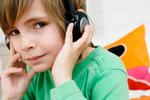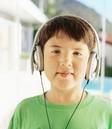Autism and the Limbic System
Densely Packed Neurons in the
Amygdala and Hippocampus of Persons with Autism
Contact Us
Complete
On-line AIT Checklist
Over the past 10 years, high-tech research
methods have begun to reveal neurological damage in some autistic individuals.
One of the most important findings indicates specific damage in the limbic
system, particularly in the amygdala and hippocampus. Much of this
research has been conducted by Dr. Margaret Bauman, (Dept. of Neurology, Harvard
Medical School), and Dr. Thomas Kemper, (Depts. of Neurology, Anatomy, and
Pathology, Boston University School of Medicine). They report densely packed
neurons in the amygdala and hippocampus of persons with autism.
Additionally, they note that
these neurons are smaller than in normal persons. At this time, we do not know
what causes neurological damage in these areas; however, the damage appears to
occur during the prenatal stage of development. Can damage in the amygdala
and hippocampus explain some of the behaviors exhibited by autistic
children and adults?
We can only speculate at
present, but it is interesting to theorize about the possible connections
between damage in the limbic system and the characteristic traits of many
autistic people. Much of what we know of the behaviors associated with the
amygdala and hippocampus are based on animal research. In these
studies, researchers either surgically damage or remove a specific area in the
brain and then observe any changes in the animals behavior. The amygdala,
(which means almond-shaped), controls our aggression and emotions. Many autistic
individuals are aggressive towards themselves or others, or conversely,
extremely passive. Furthermore, autistic children and adults often appear
emotionless or flat (even though they obviously do have emotions).
Experimenters have also shown
that when the amygdala is removed or damaged, animals exhibit behaviors
similar to autistic individuals, such as social withdrawal, compulsive
behaviors, failure to learn about dangerous situations, difficulty retrieving
information from memory, and difficulty adjusting to novel events or situations.
In addition, the amygdala is responsive to a variety of sensory stimuli,
such as sounds, sights, and smells; as well as emotionally or fear-related
stimuli. We know that autistic individuals often have problems with each of
these senses. Interestingly, Georgie, whose childhood was described in her
mothers book, The Sound of a
Miracle, often mentioned being afraid of many sounds prior to receiving
auditory integration training from Dr. Guy Berard.
The hippocampus, (shaped like a sea horse) appears to be primarily
responsible for learning and memory. Damage or removal of the hippocampus
will lead to an inability to store new information into memory.
This sounds similar to Dr.
Bernard Rimland's cognitive theory of autism. In his 1964 award-winning book
Infantile Autism, Dr. Rimland theorized that
autistic children had difficulty relating new information to previously stored
information. In addition, when the hippocampus is damaged or removed,
animals will display stereotypic, self-stimulatory behaviors and hyperactivity.
Although one can easily speculate about a relationship between the limbic system
and autistic behaviors, we should be conservative, because much of what we know
comes from animal models in which the parts of the limbic system are damaged
artificially. We need to be cautious in extrapolating these findings to autistic
individuals. However, the correspondence between behaviors seen in autism and
what we know of the limbic system is compelling.
by Stephen M. Edelson,
Ph.D.. Center for the Study of Autism, Salem, Oregon.
| 





